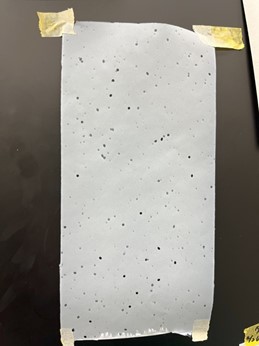Chitosan/PVA Mixed Solution Conductivity Measurement

I’m Tsumugi, a researcher. This time, I investigated the conductivity of a mixed solution of chitosan and PVA.
Tsumugi
She is a second-year researcher in the Nanofiber Division of MECC.
Her hobbies include reading science magazines and the latest
research papers, as well as karate. Her special skill is speaking Chinese.
Objective
Pure PVA is highly conductive, but it is written in the literature that adding chitosan greatly reduces the solution’s conductivity. Curious about whether the conductivity really decreases, I conducted an experiment to see if this effect could provide insights into successful spinning of other natural polymers (such as gelatin) if the conductivity indeed decreases.
Materials
Chitosan: 100
PVA①: Gohsenol EG-22P (Mitsubishi Chemical)
PVA②: Kuraray Poval 217 (Kuraray)
Solution Preparation
Chitosan was added to a 50wt% acetic acid aqueous solution to make a 3wt% solution, which was then heated and stirred at 80°C.
- PVA① was dissolved in distilled water to make a 10wt% solution, and PVA② to make a 12.5wt% solution, each heated and stirred at 70°C.
- The chitosan solution and PVA were mixed in a 1:1 ratio.
<Conductivity Measurement>
The conductivity of the produced solution was measured. The results are shown in the table below.
Table 1. Conductivity Measurement Results of PVA Solution
| Type of solution | Conductivity (mS/cm) |
| PVA① | 37.9 |
| PVA② | 604 |
| Chitosan / PVA①(1/1) | 1596 |
| Chitosan / PVA②(1/1) | 1764 |
Both PVA① and ② showed considerably high conductivity. It is likely that the acetic acid in the solution is involved.
I also compared the conductivity in acetic acid and acetic acid aqueous solution.
Table 2. Conductivity Measurement Results of Acetic Acid
| Type of solution | Conductivity (mS/cm) |
| Acetic acid | 0.05 |
| Acetic acid / H2O(1/1) | 868 |
The conductivity of acetic acid alone was quite low. When made into an aqueous solution, the conductivity increased due to acetic acid being a weak electrolyte.
This time, the chitosan solution was prepared using the solution preparation procedure we use at our company, which involved using an acetic acid aqueous solution as the solvent. However, the literature only used glacial acetic acid. Next, I want to try creating a chitosan solution with only acetic acid to see if there are any changes.
I attempted to create a sample with chitosan/PVA①, but due to the high conductivity, the droplets fell, and I was unable to make a clean sample.

Chitosan / PVA① Sample

I was hoping that mixing chitosan with PVA would reduce the conductivity, so it’s disappointing that the conductivity actually increased quite a bit. I hope it will decrease in the next attempt…!
